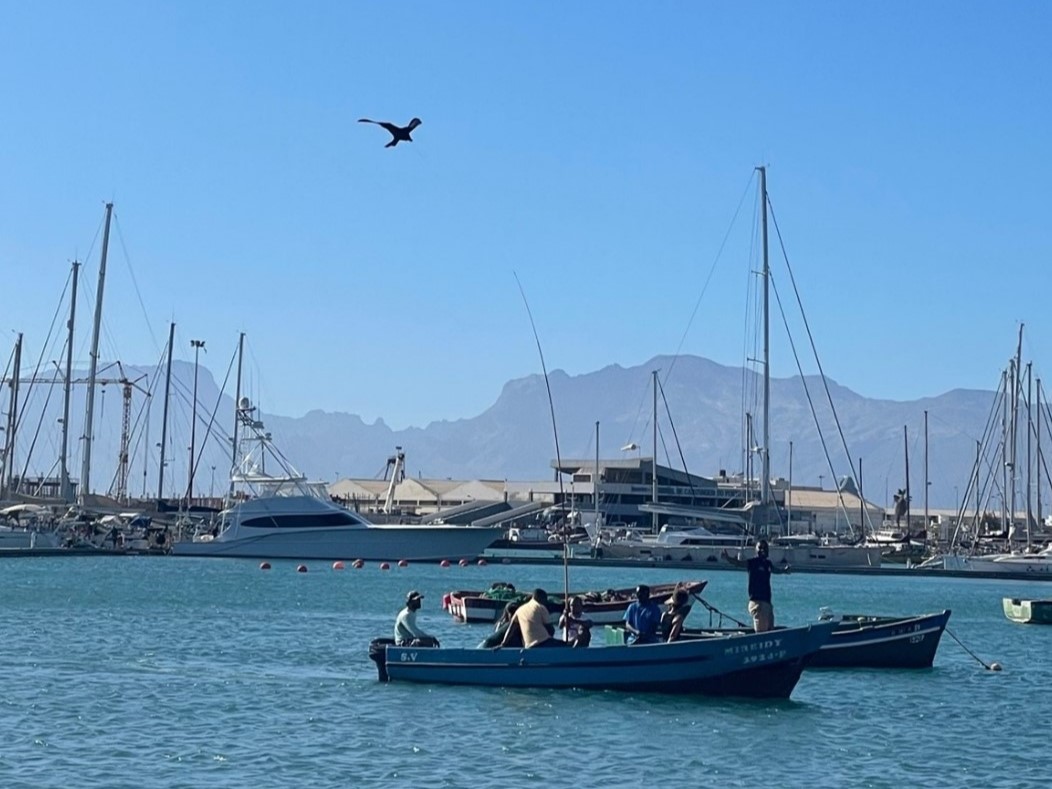Saying goodbye to bycatch

Testing of the Scarybird device in Mindelo, Cabo Verde. Credit - Tabea Zwimpfer.
How local communities are advancing marine conservation efforts in Cabo Verde
Cabo Verde’s archipelago is rich in marine biodiversity which includes a wide variety of fish, seabirds, sea turtles, and marine mammals. Its various islands and islets offer exceptional conditions for many species of migratory and sedentary birds that breed there. Its ornithological diversity includes emblematic endemic species such as the Cape Verde Shearwater (Calonectris edwardsii), Cape Verde Petrel (Pterodroma feae), and Cape Verde Storm-petrel (Hydrobates jabejabe) among others. Further, Cabo Verde hosts important nesting sites for many sea turtle species and is home to the third largest loggerhead turtle (Caretta caretta) nesting site in the world.
However, this marine ecosystem faces a growing number of threats including climate change and overfishing, leading to a drastic reduction in daily catch for artisanal fishers and impacting marine megafauna species. Furthermore, bycatch incidences - where vulnerable migratory species including seabirds, sea turtles and sharks are captured by or get entangled in fishing equipment - has a negative impact on biodiversity, contributing to localised extinctions of endemic species such as seabirds.
Engaging local communities
To tackle these threats, a number of interventions have been implemented in the country. One of these is the Guardian of Seas (GOS) programme. This innovative citizen science approach, supported by BirdLife International and five partners since 2022, aims to promote sustainable fisheries practices through the engagement of fishing communities.
The GOS programme empowers members of the local artisanal fishing communities to monitor marine megafauna sightings, and act on and report bycatch incidences of vulnerable marine species such as seabirds, sea turtles, and sharks.
To date, the programme has engaged and trained over 185 fishers across six islands in Cabo Verde to collect bycatch data, identify marine species, track artisanal fishing vessels, and report illegal, unreported, and unregulated fishing activities. These fishers have become community champions, promoting sustainable fishing and bycatch reduction across the archipelago’s six islands.
“Before, birds and sea turtles were of no importance to me. It was a very mundane thing for me to kill them when I fished them or met them at sea. Now, as a Guardian of the Sea, my perception of these animals has changed a lot. I better understand their usefulness in the marine ecosystem and their importance to us fishermen. I've become their defender and make sure they live peacefully at sea”, says Adir "Djo" Cotao, a fisherman and a GOS member.
“Before, birds and sea turtles were of no importance to me ... Now, as a Guardian of the Sea, my perception of these animals has changed a lot ... I've become their defender and make sure they live peacefully at sea."
Bycatch mitigation
As part of addressing bycatch incidences, an innovative technique known as the ‘Scarybird’, has been piloted in four islands across the country. Scarybird involves a kind of kite that can be attached to fishing boats, mimicking a predator bird in flight, thus preventing seabirds from coming too close to fishing gear that might otherwise catch them.
This trial initiative, a first in West Africa and Cabo Verde, aims to assess the effectiveness of the Scarybird as a mitigation technique for seabird bycatch in West African artisanal fisheries. Since fishers began using Scarybirds in August 2024, seabird attacks on baits have reduced by 55% compared to control trips where no Scarybirds are used. About 66 devices are now in use, with a strong fisher demand for continued adoption underlining their effectiveness.
“Before, we wasted a lot of time trying to keep the seabirds away from our nets, without much success. What's more, many birds were accidentally caught on our hooks. But today, thanks to the Scarybird, we've taken a big step towards managing this problem,” says Enio Silva (Lambão), a fisherman from the island of Sal, Cabo Verde, and a GOS member.
“Since the launch of the trial campaign, the Scarybird has been a hit with fishermen on all the surrounding islands. While more scientific data and long-term monitoring are needed to confirm effectiveness, these early results provide hope — and, crucially, have sparked growing interest among other fishers. Because of its success, more and more fishers want to work with us,” says Anice Lopes, Sustainable Fisheries Coordinator at Associação Projeto Biodiversidade, a local project partner.
In addition to the Scarybird, safe handling and release techniques for seabirds and sea turtles have been promoted, reaching over 185 fishers across the archipelago. These new skills have led to a significant decrease in the mortality of the bycaught animals, with 100% of sea turtles bycaught safely released, while a 7% increase of safely released seabirds was noted.
Behaviour change
A key element of this initiative is behaviour change to ensure that conservation interventions are successful. To this end, behavioural insight work conducted using the Capacity, Opportunity, Motivation, and Behaviour model, enabled the co-design of an outreach strategy that contributed to observable changes in fishers’ attitudes and practices. While long-term change requires sustained engagement, early results demonstrated that the strategy is already influencing day-to-day behaviours. The social behaviour research also identified the key barriers for the adoption of the mitigation measures. Further, the study identified a lack of awareness about sustainable fishing practices, a lack of adequate and continuous support including capacity building from authorities, and economic drivers as the main barriers contributing to the inaction of fishers.
Improving livelihoods
As part of improving livelihoods, solar powered ice plants were set up in Sal Island, which reduced ice costs by 33%, saving fishers about 4,000 Cape Verdean Escudo (£32) monthly. Additionally, 33 cooling boxes were provided, and over 90 fishers benefitted from Hazard Analysis and Critical Control Point training, thus improving fish quality and reducing spoilage.
Through engaging local communities, the GOS programme in Cabo Verde has effectively built capacity of local communities and promoted conservation ownership, underlining the importance of community led conservation efforts which can be scaled up across West Africa to safeguard critical marine resources in the region.
Written by Tabea Zwimpfer, Ahmed Diame, Lewis Kihumba, and Giliane Okana. For more information on this Darwin Initiative Main project 29-009, led by BirdLife International, please click here.

 Back
Back